- Home
- P. D. James
The Maul and the Pear Tree Page 9
The Maul and the Pear Tree Read online
Page 9
What use was the offer of 100 guineas reward likely to be, when the Government’s offer after the Marrs’ murder of 500 guineas had evidently failed? A gesture only: yet the parish owed it to the Williamsons to make it. They also needed to do everything possible to reassure their terrified families and neighbours. So, too, did the Churchwardens, Overseers and Trustees of the next parish, to the east of Shadwell. The vestry of the hamlet of Ratcliffe met next morning; and their meeting, understandably, seems to have been conducted more rationally than the midnight gathering of the panic-stricken folk of Shadwell. They took time to think, and someone who had been inside the King’s Arms described the iron bar that had been found beside Williamson’s body. It was about thirty-five inches long, and similar to the weapon found on Marr’s counter. Perhaps it was not a crow-bar, as at first thought, but a ripping chisel. The same perhaps that had been found in Marr’s shop? But that was impossible, for the first was now held by the magistrates, and this seemed new. Mystified, the vestry drew up their own hand-bill carefully, and the principle on which they acted was an old and logical one. Although they were not directly concerned, the fact that a gang of monsters could roam the area with impunity obliged them to look to the security of their own parish. Their duty was first to assess the risk and then settle the size of the reward in proportion to it. They followed the example of Shadwell and offered 100 guineas. But, in addition, they offered a further twenty guineas to any one able to prove to whom the new ripping chisel had been sold. To the parish of Ratcliffe, clearly, this ripping chisel was a most important clue to the mystery.
No one could reasonably expect the parish authorities to do more; but what of the magistrates? Criticism welled up. For all their apparent activity during the twelve days since the murder of the Marrs they had accomplished nothing – worse, they had failed, even, to prevent the monsters from striking again. It was not enough to sack a few watchmen, people muttered; the magistrates themselves should go.
To Harriott this situation was intolerable. With no help coming from the Home Office and a trio of incompetent amateurs in charge at Shadwell, he resolved to take matters into his own hands. A man who had sailed the world, conquered fresh territories for Britain and subdued an Indian rajah was not to be foiled by a gang of thugs. After breakfast he called on Capper and Markland at the Shadwell Public Office, then hurried back to Wapping to issue an imperious message:
The Magistrates of the Thames Police present their compliments to the Magistrates of Shadwell requesting their meeting them at the Thames Police Office this day at 2 o’clock – to consult together on the most effectual measures for discovering the atrocious midnight murderers that infest the neighbourhood of their respective Offices, which from the murder of three people in a house in New Gravel Lane last night, gives an appearance of a gang acting on system.
A similar message went to the magistrates at the Whitechapel Public Office. Had they been challenged, the magistrates would have strenuously claimed that they were, in fact, already co-operating fully. Was not every policeman and watch in East London, no matter what his parish allegiance, on the look out for suspects? Were they not keeping each other and the Home Secretary informed of progress? Had not the Shadwell magistrates invited Harriott to be present when they first interviewed Murray, Olney and Margaret Jewell? But the only kind of co-operation which could have been effective, the central control of the whole investigation by one bench, including the deployment of a united force, the interrogation of all the suspects and the custody of all exhibits, together with a system for the prompt receipt by the investigating magistrate of all information, was as much beyond their comprehension as it was beyond their ability to organise.
The meeting took place that Friday afternoon, the day following the murders, in an atmosphere of rising tension and excitement. An angry mob surged outside, gripped by raw, seething emotions that might turn to sudden panic, hysteria, blind vengeance. The magistrates’ responsibility stared them starkly in the face. If the murderers were not quickly discovered the people would arm themselves – many were already doing so – and nobody would be able to answer for the safety of the Portuguese, or Germans, or Irish, or any other foreign community the mob might turn on in their rage. Yet the means available to the magistrates were pathetically small in relationship to their responsibility: eight police officers at Shadwell, eight more at Whitechapel, five at Wapping and the temporary loan of a posse of Bow Street Runners.
To Harriott all this – the angry crowd, the challenge, the danger – would have a curiously familiar ring. He had seen it before, in the very same setting, at the Wapping Police Office, and would relish once more being called upon to play a leading role. One October evening soon after the River Thames Police had been set up, an army of half-savage Irish coal-heavers, incensed at the way the new police were interfering with their pilfering on the river, massed outside the Office. Some of their mates had been caught and were under examination; the rest were determined to release them. They attacked the door, then tore up paving stones and smashed the windows. ‘I believe,’ Harriott exulted in his memoirs, ‘I was the only person in the office, at the time, who had ever smelt gunpowder burnt in anger before.’ The riot spread, and it seemed that the office would be overwhelmed. One City merchant fled from his business to the attic; others, to Harriott’s disgust, ‘made a prudent retreat by getting into a boat and rowing away’. Harriott, meanwhile, had given orders for firearms to be loaded; and ‘their loading, and giving necessary directions, seemed to electrify and make me young again’. The Riot Act was read, and it was enough for Harriott to shoot one rioter for the mob to disperse. Had the murderers of the Marrs and Williamsons come charging down Old Gravel Lane armed with cutlasses, mauls and ripping chisels, Harriott would have known how to deal with them, and would have gloried in the chance. Unhappily this investigation required more subtle methods and, for all his experience, enthusiasm and courage, Harriott was no more effective than were the less flamboyant magistrates of the Shadwell and Whitechapel benches.
No record exists of the discussion behind the shuttered windows of the Police Office, and probably no minute was taken. Harriott was no slave to bureaucracy. The meeting was, in any case, the last, as well as the first of its kind. With it, co-ordination lapsed. Each bench went home and proceeded to give its own account of the Williamsons’ murder to the Home Secretary.
Harriott was brief, as befits a man of action. He took credit for calling the conference on the fresh ‘atrocious murders’, at which the magistrates had considered ‘the most effectual measures to be adopted, and of co-operating and exerting their joint endeavours’. But he gave no hint of what these measures might be. The confidence he had shown after the Marrs’ murder, when he had allowed his zeal to outrun his discretion, was abating. He now gives the impression of an angry, frustrated old man, grappling with somebody else’s problem for no better reason than that it presented a challenge, and becoming uneasily aware that the challenge was beating him.
The Whitechapel bench had hitherto been little involved, although like every other Public Office in the Metropolis they had examined suspects brought in after the murder of the Marrs. Harriott’s conference seems to have jerked them out of apathy. Perhaps, with reason, they feared dismissal unless they, too, showed the Home Secretary evidence of less than usual sloth. ‘With deep regret,’ they wrote, ‘we feel it our duty to state that a horrid murder was last night committed at the King’s Arms Public House in New Gravel Lane…. Every exertion is making [sic] to trace the Perpetrators of this alarming and most atrocious deed.’ There is no indication at this or any other time that the Whitechapel magistrates exerted themselves to the point of inconvenience, or even interested themselves in the case once they had got away from Harriott’s conference.
But it was, after all, the Shadwell bench who were primarily concerned, for it was in their area that all the victims had lived. Here, at least, the Home Secretary had a right to look for enthusiasm. The letters from
both the Thames and the Whitechapel Offices arrived at the Home Office during the course of Friday, but as the day wore on there was still no news from Shadwell. Ryder sent by hand a message of inquiry, and learned the reason for delay: immediately on their return from Harriott’s conference Capper and his colleagues had proceeded to examine a suspect, a cheerful Irishman named Sylvester Driscoll, who was unlucky enough to lodge near the King’s Arms, in New Gravel Lane. On his arrest the prisoner was found to be in possession of what he protested to be ‘only a drop he was laying in, as usual, before the holidays’ – a gallon of brandy, for which he had paid thirteen shillings and sixpence, a quart of whisky and a sample of British brandy. Searching his room, a police officer then discovered a pair of white canvas trousers, still damp from recent washing, and with evident traces of blood on them. Driscoll insisted that the marks were paint but a ‘medical gentleman’ confirmed that they were blood stains. Thereupon, ‘the prisoner said that a milk-woman slept in the same room where he lodged, and that the trousers were found under her bed’. Mrs Driscoll hopefully offered an alibi, but the magistrates seem to have been unimpressed by either explanation, and Driscoll was committed. Then, this important business concluded, Capper turned his attention to the Home Secretary’s inquiry; and late in the day the messenger brought back his reply. The handwriting betrays the magistrate’s weariness and agitation. Towards the end it resembled that of an old and sick man.
Shadwell 20th Dec. 1811.
Sir,
In answer to your letter I beg leave to inform you of the following circumstances of the case of murder that took place last night in New Gravel Lane, Shadwell, at the Public house called the King’s Arms, and kept by a man named John Williamson. At Eleven o’clock the Watchman whose Box is immediately opposite left his Box to go his round, when all was safe, in ten minutes time he returned, and observed a young man who was a Lodger in the house, lowering himself down by two Sheets from a two pair of stairs window, on catching him, he told him the family were murdered, the door was immediately broken open, and Catherine [sic] Williamson, and her Maid Servant, Bridget Harrington, were found Murdered in the Tap Room, their throats cut etc. and the man in the cellar in the same state.
There is every reason to suppose the murderers of Mr Marr’s family are the perpetrators of this atrocious act also. The circumstances in very many respects corroborate this idea. The same description of a man was seen about the house. The print of a nailed shoe was also discovered, at the back of the house, where they also made their escape. We are much in hopes that we have obtained some clue, tho’ I cannot speak with any certainty, but you shall have the first information. Pardon any inaccuracy, as I have been writing in very great confusion.
I am Sir Your Very Obt. & Hble. Servt.,
B. C. Capper.
‘We are much in hopes that we have found some clue’. Capper was nothing if not cautious. Already there were at least five clues: a new iron crow-bar – or was it another ripping chisel? – covered with blood; Williamson’s missing watch, bearing the name James Catchpole, of which a description had been circulated; Turner’s description of the man he claimed to have seen bending over Mrs Williamson’s body; a footprint discovered in the clay bank outside the back window where the sill was stained with blood; and Anderson’s description of a man seen during the evening to be lurking outside the King’s Arms.
Nor was this all. During the course of Friday, The Times reported:
Mr Henry Johnson, a person of respectability in St Paul’s parish, Shadwell, and two women of the town deposed, that just at the time the alarm of murder was given, they saw two men running up the lane towards Ratcliffe Highway. One of them appeared to be lame, and could not keep up with his com panion. He appeared to be exhausted, either by running or by some violent exertion. This man was the shortest of the two. They heard the tallest man say, ‘Come along Mahoney (or Hughey) Come along,’ or words to that effect. They made their way towards the Bluegate Fields.
In ignoring all these clues Capper was, indeed, writing in great confusion.
What effect these various accounts had on the Home Secretary it is impossible to say, nor is there any reason to think that he made any use of them; although it is likely that Beckett would have communicated their contents to Graham, at Bow Street. Once again, however, the Home Secretary acted exceptionally in offering the Government’s own reward for any information that led to the conviction of the murderer or murderers, and as in the case of the Marrs, the reward was again pitched at the extraordinarily high sum of £500. Coupled with the offer was the usual promise of a free pardon to anyone, other than the villains themselves, who might be prepared to come forward.
The Government’s proclamation came out on Saturday, 21 December, the same day that the national newspapers were reporting the second ‘Horrid Murders’. The tone set by The Times was typical: ‘On Thursday night, between the hours of eleven and twelve, another scene of sanguinary atrocity was acted in New Gravel Lane, Ratcliffe Highway, equalling in barbarity the murders of Mr Marr and his family.’ To the London Chronicle, it was ‘with equal horror and concern we have to state that three more persons have lost their lives by the hands of midnight murderers, within two minutes walk of the very spot where the family of the late unfortunate Marr perished a few days ago by the same means.’
Within hours a fresh thrill of horror convulsed the capital. ‘It is almost impossible,’ a Mr Johnson of Fenchurch Street told the Home Secretary, ‘to conceive the fear and dismay these dreadful occurrences have made on the public, particularly at the East End of the Town.’ Dreadful reports circulated, building up fresh panic. It was rumoured that another publican had been murdered on Friday night in the City Road, and that Mr Corse, landlord of the White Rose1 in Ratcliffe Highway, was next on the death list. An armed guard was placed outside the public house all night. Then a story circulated that two policemen had been massacred in Limehouse while trying to arrest a suspicious character. The truth was that the policemen had chased the suspect, taken him in custody and bundled him off. But before they had got far they were attacked by 200 angry Irishmen, who rescued the prisoner. The policemen obtained help and got their man again, but he was released a second time. Finally the man disappeared, when it turned out that the rioters had believed the policemen to be part of a press-gang. The man eventually surrendered himself, as The Times put it, ‘with his shirt completely stained with the blood of his antagonists and accounted satisfactorily for his opposition in this unfortunate affair.’ Similar scenes were occurring all over London. No one knew where the murderers would strike next. ‘Many of our readers,’ Macaulay wrote years later, ‘can remember the state of London just after the murders of Marr and Williamson – the terror which was on every face – the careful barring of doors – the providing of blunderbusses and watchmen’s rattles. We know of a shopkeeper who on that occasion sold three hundred rattles in ten hours.’
Three hundred miles away, in Keswick, Southey (according to De Quincey) was following every turn in the saga with the deepest interest; it was, he declared, a rare case of ‘a private event of that order which rose to the dignity of a national event’, De Quincey himself was even more enthralled. Having known London as a youth, his opium-stimulated imagination took in every detail that years afterwards he was to work over and over again. In 1811 De Quincey was living at Dove Cottage (which he had taken over from Wordsworth three years earlier), and even in Grasmere:
the panic was indescribable. One lady, my next neighbour, whom personally I knew, living at that moment, during the absence of her husband, with a few servants in a very solitary house, never rested until she had placed eighteen doors (so she told me, and indeed satisfied me by ocular proof ), each secured by ponderous bolts, and bars, and chains, between her own bedroom and any intruder of human build. To reach her, even in her drawing room, was like going, as a flag of truce, into a beleaguered fortress; at every sixth step one was stopped by a sort of portcullis.
The ac
count may be exaggerated, yet there is no doubt that the panic De Quincey describes was widespread. The Home Office papers contain letters from all parts of the country testifying to the ‘general alarm’ caused by the murders, and calling for the urgent reform of the police and the magistracy.
If it had been generally realised just how paltry, confused and disjointed the local efforts were that weekend, just a fortnight after the murder of Marr’s family and forty-eight hours after the killing of the Williamsons, the public alarm would have been even greater.
Three adjacent parish councils had each posted up its own hand-bill advertising different rewards for different purposes. The parish of St George’s was still offering fifty pounds for information that might lead to the conviction of the Marrs’ murderers, and their hand-bill described the broken maul and a ripping chisel about twenty inches long; it appealed to dealers in old iron or anyone who had lost such articles to come forward. The parish of St Paul’s, concerned with the Williamsons, held out a promise of 100 guineas for information leading to a conviction of their murderer, but advertised no clue or lead that might be followed up. The parish of Ratcliffe, not directly concerned with either crime, was offering 100 guineas in respect of the Williamsons and a further twenty guineas to anyone who could point to a person who had recently bought a ripping chisel about thirty-five inches long.
The magistrates were similarly at odds. The Thames Police Office had offered a reward of twenty pounds for information about three suspicious characters seen outside Marr’s shop, but had been rebuked for doing so. Subsequently they had appealed for information relating to the maul, which they were now able to advertise as being definitely identifiable by the initials J.P.; but this time no reward was offered. The Shadwell magistrates had offered an unspecified reward for information about a bloody shirt and handkerchief, and had then again lapsed into baffled impotence. All they had been able to do after being prodded by the Home Secretary, was to express the not surprising opinion that both crimes must have been committed by the same ruffians, and this on no better grounds than that both gangs escaped by the back of the house and that ‘the same description of man’ was seen about both houses. This was one of the men, presumably, whose description Harriott had advertised a fortnight earlier with his irregular offer of a reward. The Home Office, meanwhile, took delivery of a great deal of paper and said nothing, resting on the two vast offers of 500 guineas each with which they hoped to bring information to light bearing on both crimes. It seems incredible that no one in authority even attempted to pull the various strings together, build up a theory or work out a consistent line of investigation that would take account of all the important clues that were now available. But at that time it was no one’s duty to do so, and affairs continued to run their haphazard course. Meanwhile the whole country waited eagerly for the report of the Coroner’s inquest on the bodies of the Williamsons and their servant.

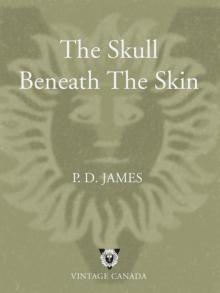 The Skull Beneath the Skin
The Skull Beneath the Skin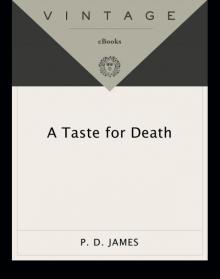 A Taste for Death
A Taste for Death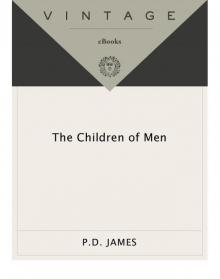 The Children of Men
The Children of Men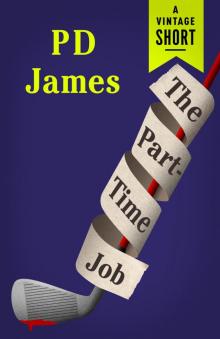 The Part-Time Job
The Part-Time Job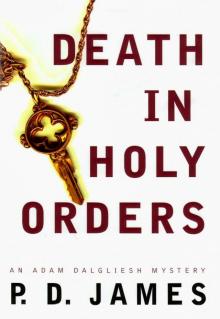 Death in Holy Orders
Death in Holy Orders The Victim
The Victim Shroud for a Nightingale
Shroud for a Nightingale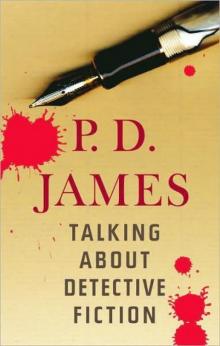 Talking about Detective Fiction
Talking about Detective Fiction Sleep No More
Sleep No More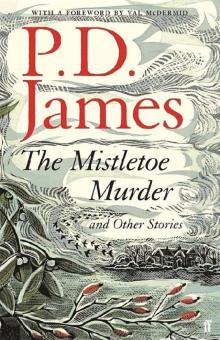 The Mistletoe Murder and Other Stories
The Mistletoe Murder and Other Stories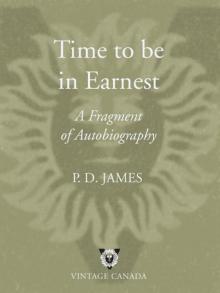 Time to Be in Earnest
Time to Be in Earnest Original Sin
Original Sin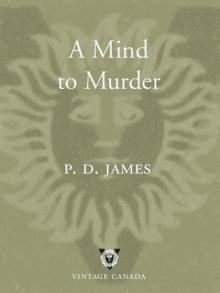 A Mind to Murder
A Mind to Murder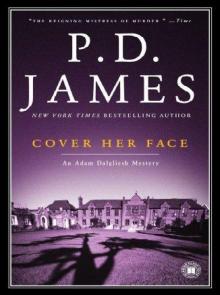 Cover Her Face
Cover Her Face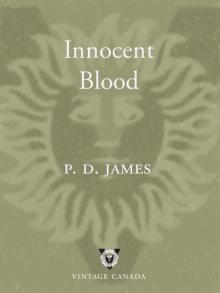 Innocent Blood
Innocent Blood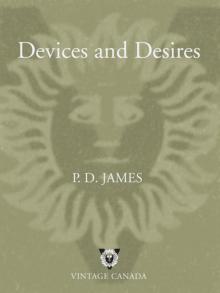 Devices and Desires
Devices and Desires Sleep No More: Six Murderous Tales
Sleep No More: Six Murderous Tales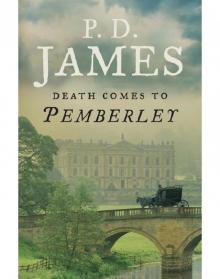 Death Comes to Pemberley
Death Comes to Pemberley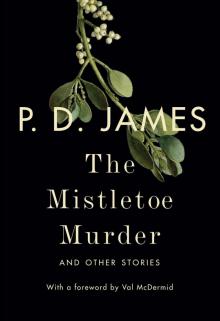 The Mistletoe Murder
The Mistletoe Murder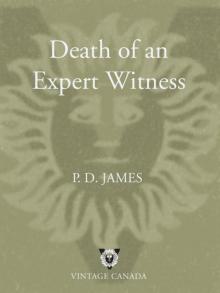 Death of an Expert Witness
Death of an Expert Witness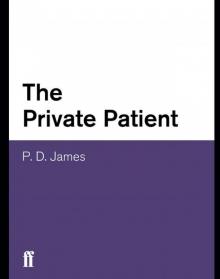 The Private Patient
The Private Patient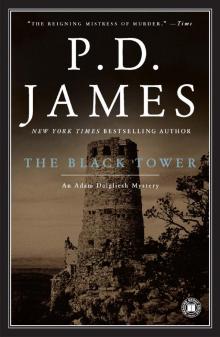 The Black Tower
The Black Tower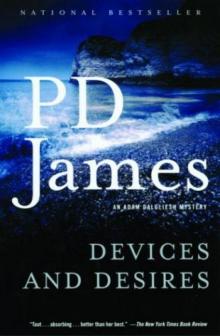 Devices & Desires - Dalgleish 08
Devices & Desires - Dalgleish 08 Unnatural Causes
Unnatural Causes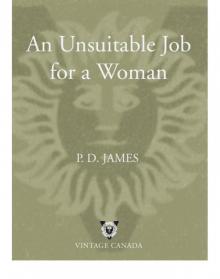 An Unsuitable Job for a Woman
An Unsuitable Job for a Woman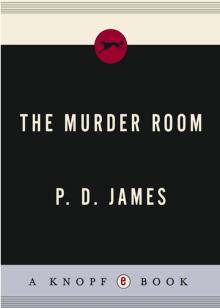 The Murder Room
The Murder Room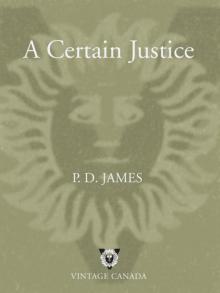 A Certain Justice
A Certain Justice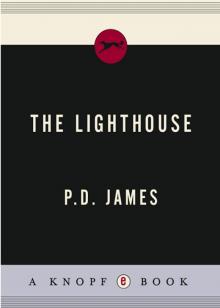 The Lighthouse
The Lighthouse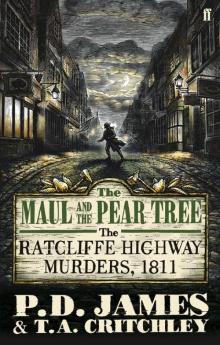 The Maul and the Pear Tree
The Maul and the Pear Tree